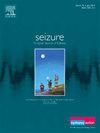Yield in routine electroencephalography in adults with newly diagnosed epilepsy at a third-level epilepsy center in South Korea
IF 2.7
3区 医学
Q2 CLINICAL NEUROLOGY
引用次数: 0
Abstract
Purpose
In people with epilepsy (PWE), the yield of interictal epileptiform discharges in electroencephalography (EEG) is an important determinant of good clinical practice. This study sought to investigate routine EEGs in adults with newly diagnosed epilepsy at a third-level epilepsy center in South Korea and assess the factors affecting yield.
Methods
Electronic medical records and 2,584 EEGs from 339 PWE were retrospectively reviewed from July to December 2023. Overall and cumulative yields, yield-increasing predictive factors, routine EEG natural sleep state, and yield changes before and after medical treatment were investigated.
Results
For the first EEG, the yield was 31.6 %, while the initial two and three consecutive EEGs had cumulative yields of 44.0 % and 49.6 %, respectively. Yield-increasing predictive factors included age ≤16 years at seizure onset, idiopathic generalized epilepsy, gender (female), and drug-resistant epilepsy. Of the PWE, approximately 90 % experienced natural sleep during routine EEG recordings, and the duration of sleep stage N2 was proven to be a yield-increasing predictive factor. Yield change before and after medical treatment was statistically significant.
Conclusions
At our center, among adults with newly diagnosed epilepsy, the yield from initial EEGs was comparable to that reported by some previous studies. Our results suggest that for epilepsy diagnosis, if necessary, repeated EEGs should be performed with sleep EEG before starting medical treatment for cost-effectiveness. After medical treatment, care should be taken not to underestimate the likelihood of false negatives in the EEG.
求助全文
约1分钟内获得全文
求助全文
来源期刊

Seizure-European Journal of Epilepsy
医学-临床神经学
CiteScore
5.60
自引率
6.70%
发文量
231
审稿时长
34 days
期刊介绍:
Seizure - European Journal of Epilepsy is an international journal owned by Epilepsy Action (the largest member led epilepsy organisation in the UK). It provides a forum for papers on all topics related to epilepsy and seizure disorders.
 求助内容:
求助内容: 应助结果提醒方式:
应助结果提醒方式:


